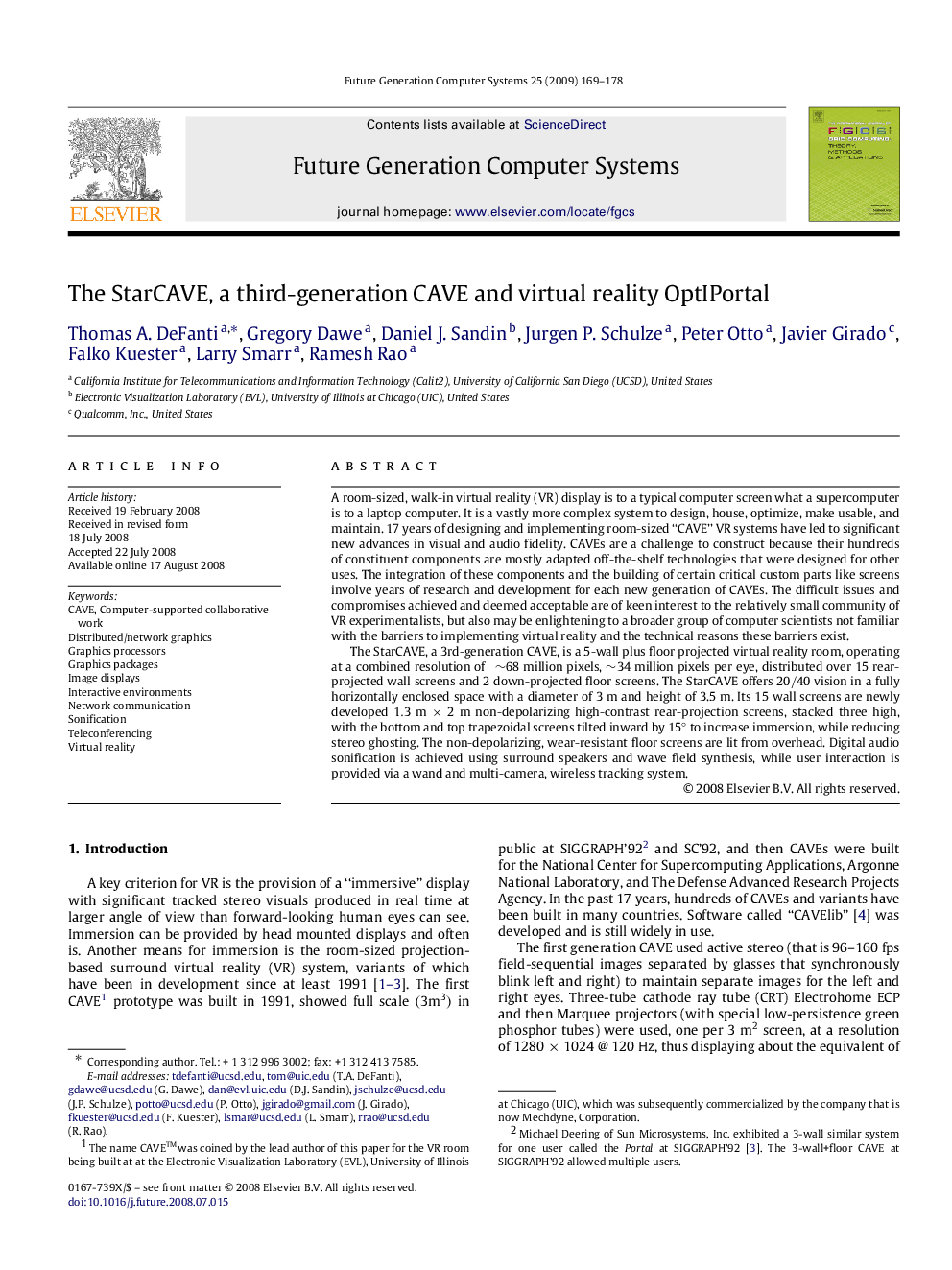| Article ID | Journal | Published Year | Pages | File Type |
|---|---|---|---|---|
| 425233 | Future Generation Computer Systems | 2009 | 10 Pages |
A room-sized, walk-in virtual reality (VR) display is to a typical computer screen what a supercomputer is to a laptop computer. It is a vastly more complex system to design, house, optimize, make usable, and maintain. 17 years of designing and implementing room-sized “CAVE” VR systems have led to significant new advances in visual and audio fidelity. CAVEs are a challenge to construct because their hundreds of constituent components are mostly adapted off-the-shelf technologies that were designed for other uses. The integration of these components and the building of certain critical custom parts like screens involve years of research and development for each new generation of CAVEs. The difficult issues and compromises achieved and deemed acceptable are of keen interest to the relatively small community of VR experimentalists, but also may be enlightening to a broader group of computer scientists not familiar with the barriers to implementing virtual reality and the technical reasons these barriers exist.The StarCAVE, a 3rd-generation CAVE, is a 5-wall plus floor projected virtual reality room, operating at a combined resolution of ∼68 million pixels, ∼34 million pixels per eye, distributed over 15 rear-projected wall screens and 2 down-projected floor screens. The StarCAVE offers 20/40 vision in a fully horizontally enclosed space with a diameter of 3 m and height of 3.5 m. Its 15 wall screens are newly developed 1.3 m×2 m non-depolarizing high-contrast rear-projection screens, stacked three high, with the bottom and top trapezoidal screens tilted inward by 15∘ to increase immersion, while reducing stereo ghosting. The non-depolarizing, wear-resistant floor screens are lit from overhead. Digital audio sonification is achieved using surround speakers and wave field synthesis, while user interaction is provided via a wand and multi-camera, wireless tracking system.
